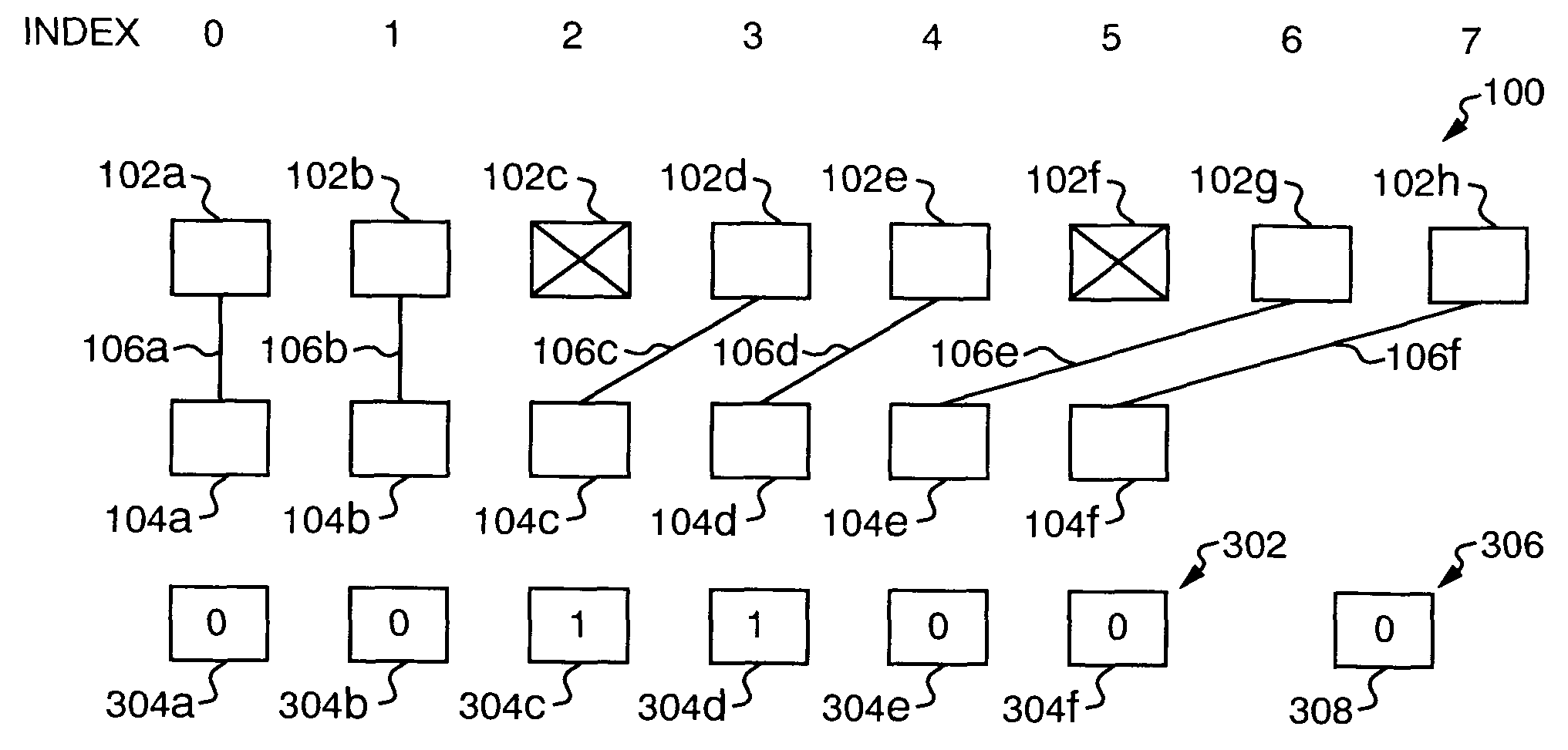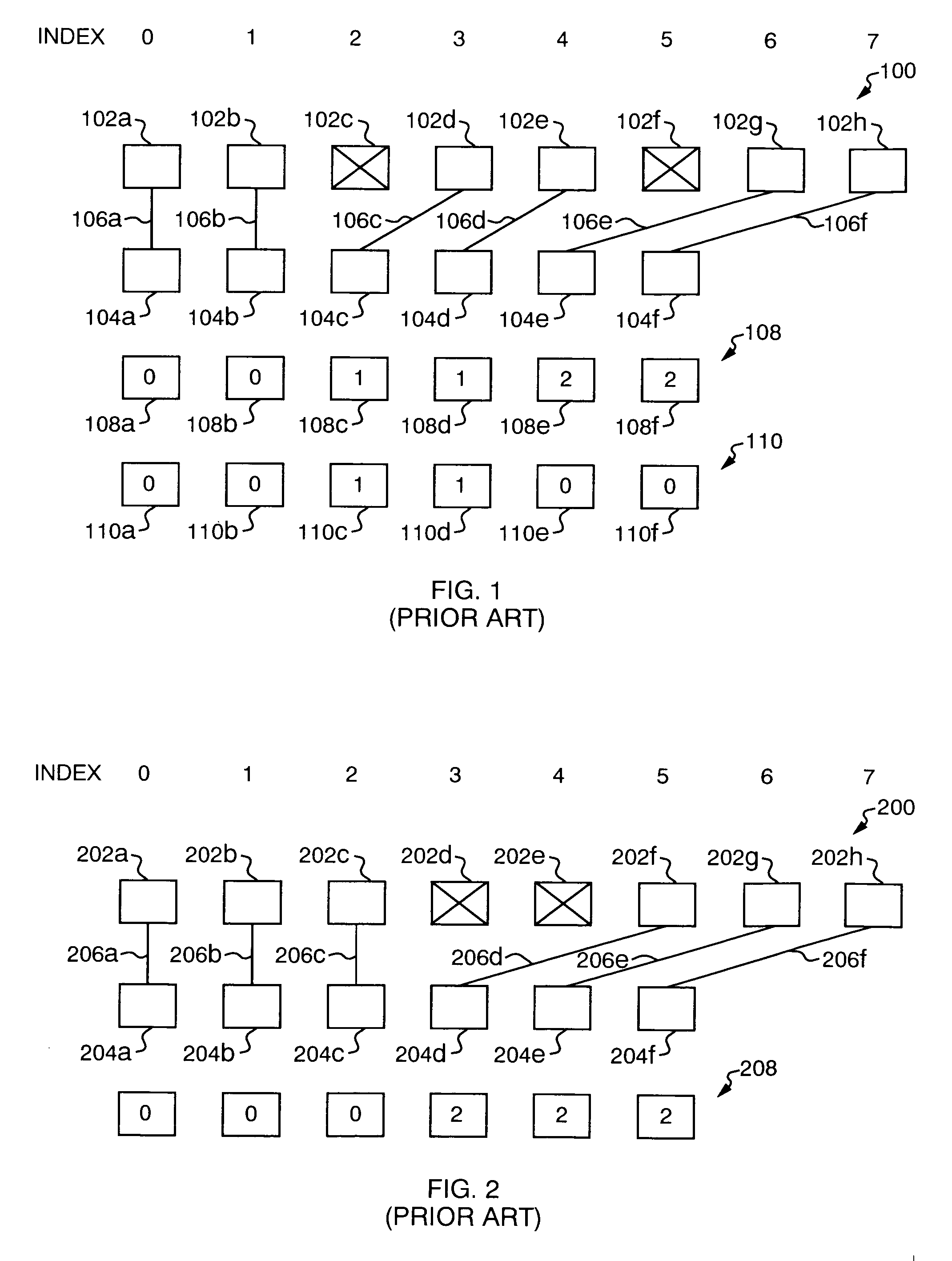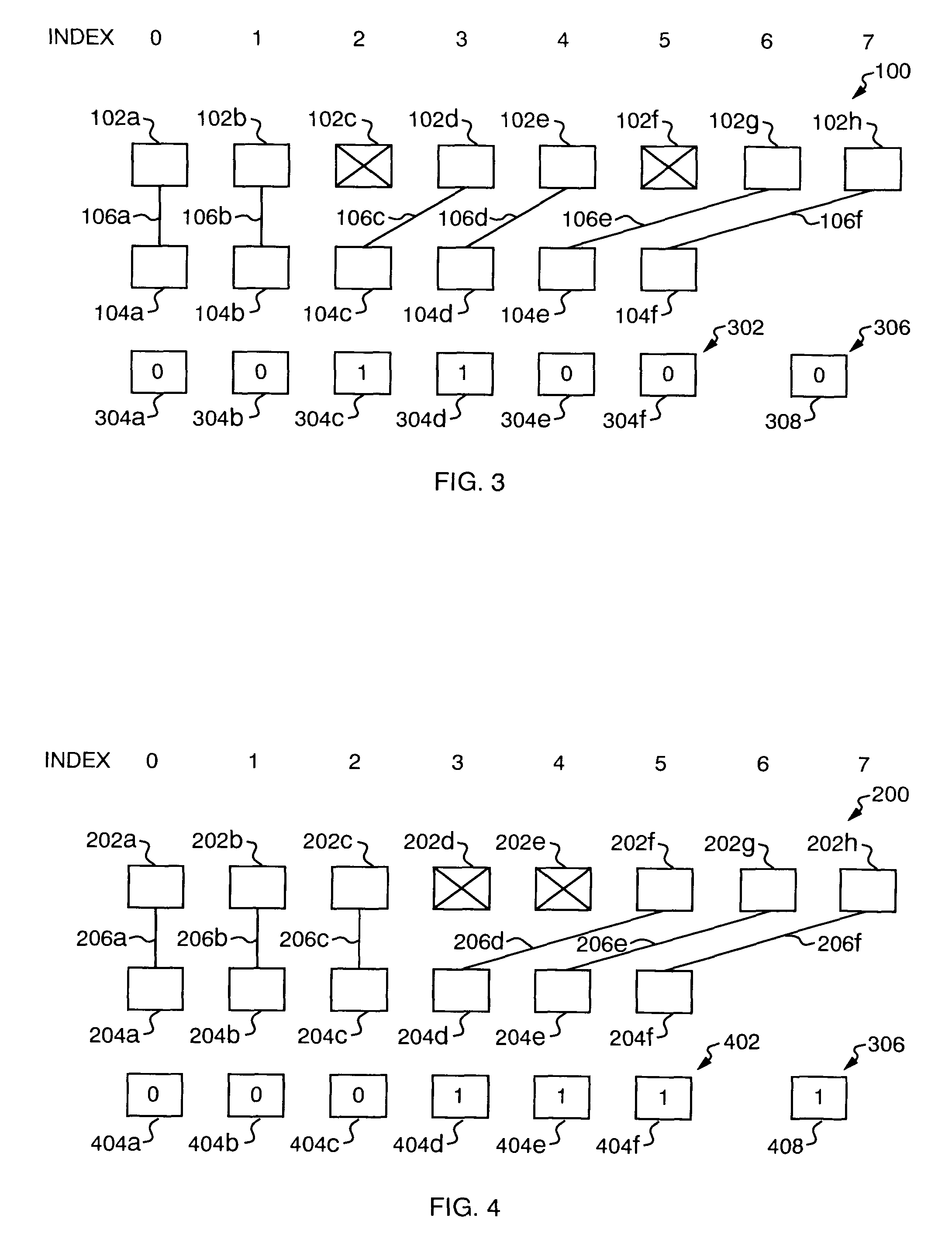Shift redundancy encoding for use with digital memories
a technology of redundancy encoding and digital memories, applied in the field of redundancy encoding for use with digital memories, can solve the problems of inability to manufacture such memory chips perfectly, inability to store data reliably, and increasing the size of integrated circuits
- Summary
- Abstract
- Description
- Claims
- Application Information
AI Technical Summary
Problems solved by technology
Method used
Image
Examples
Embodiment Construction
Techniques are disclosed for encoding mappings between functional (i.e., non-defective) bits in a digital memory and input / output ports for accessing the functional bits. Such mappings may be encoded in a shift encoding that includes a shift redundancy pattern and a hints table. The shift redundancy pattern may indicate positions of transitions from functional bits to defective bits in the digital memory. The hints table may indicate the number of defective bits in each set of consecutive defective bits in the digital memory. The combination of the shift redundancy pattern and hints table may be used to electrically connect the memory input / output ports to corresponding functional bits in the digital memory, thereby bypassing the defective bits and effectively repairing the memory. The shift encoding may be stored using a relatively small number of circuit elements and accessed relatively quickly to perform memory repair.
Before describing embodiments of the present invention in m...
PUM
 Login to View More
Login to View More Abstract
Description
Claims
Application Information
 Login to View More
Login to View More - R&D
- Intellectual Property
- Life Sciences
- Materials
- Tech Scout
- Unparalleled Data Quality
- Higher Quality Content
- 60% Fewer Hallucinations
Browse by: Latest US Patents, China's latest patents, Technical Efficacy Thesaurus, Application Domain, Technology Topic, Popular Technical Reports.
© 2025 PatSnap. All rights reserved.Legal|Privacy policy|Modern Slavery Act Transparency Statement|Sitemap|About US| Contact US: help@patsnap.com



